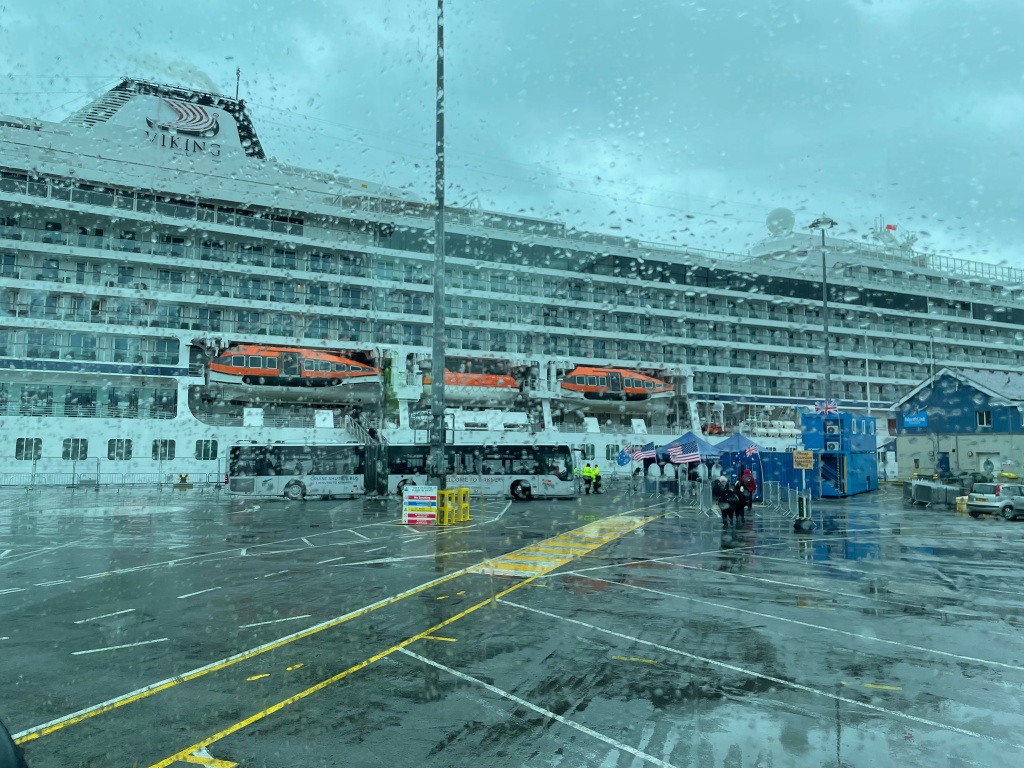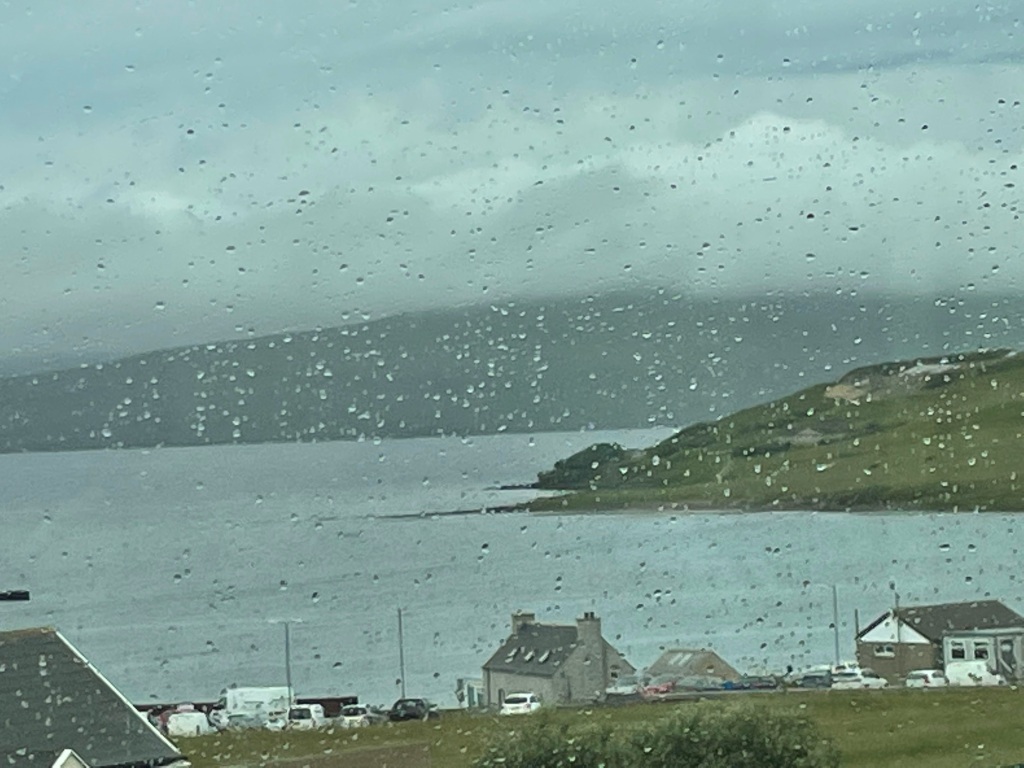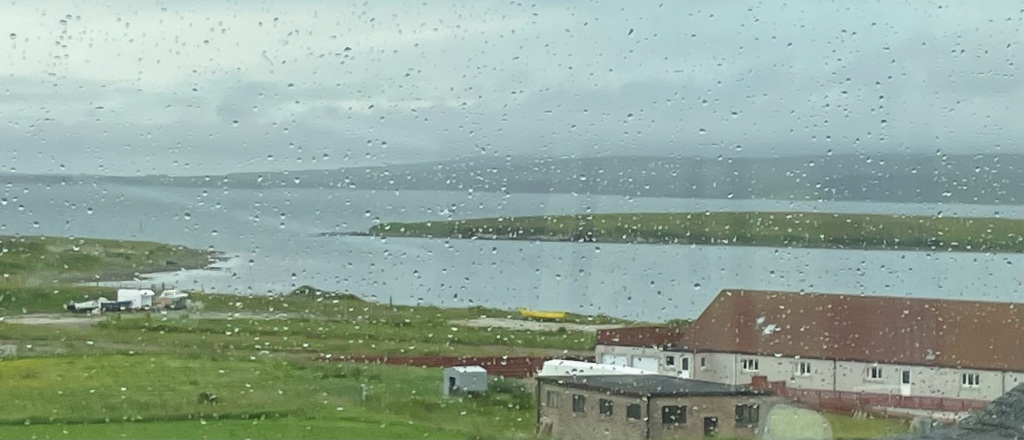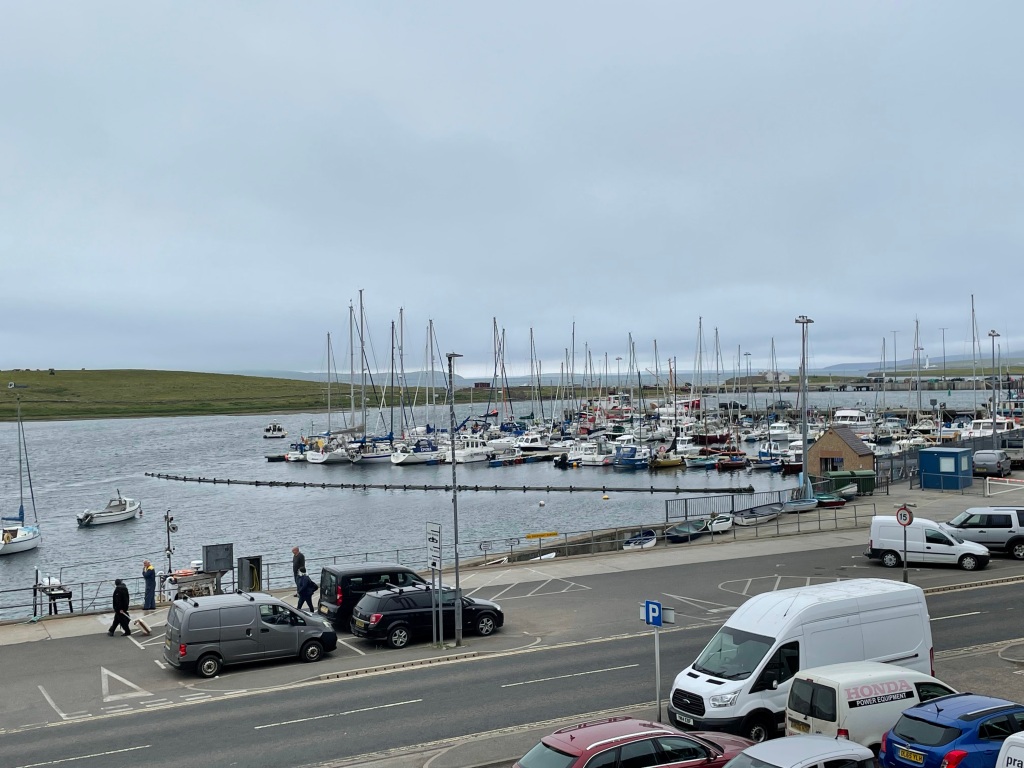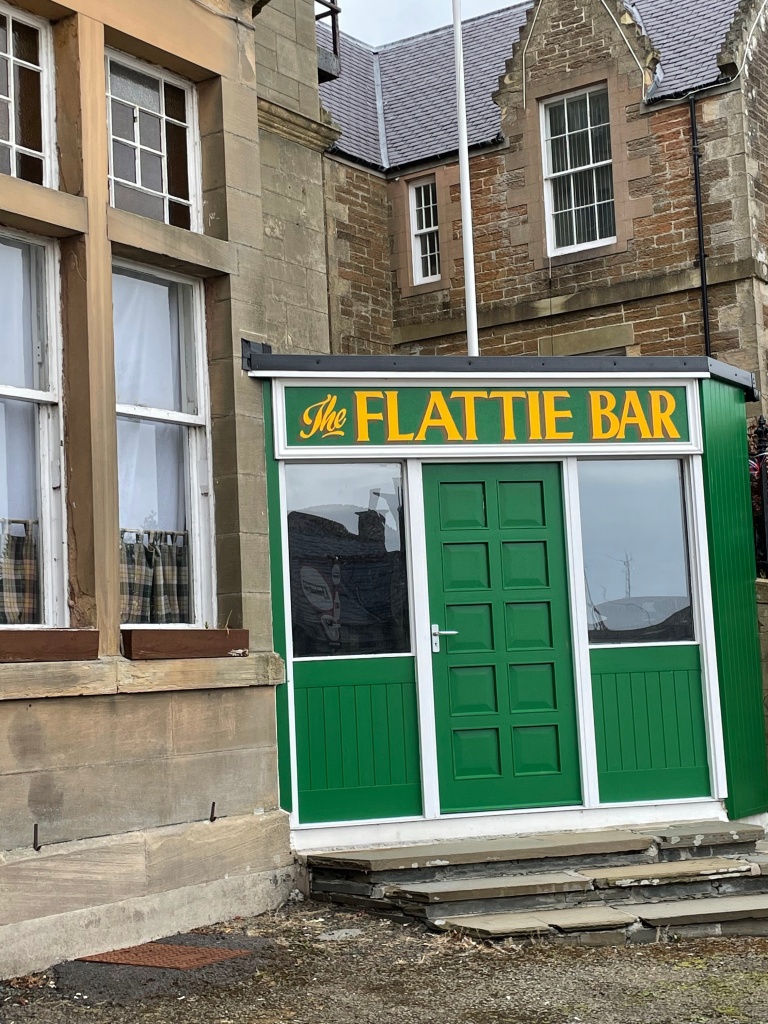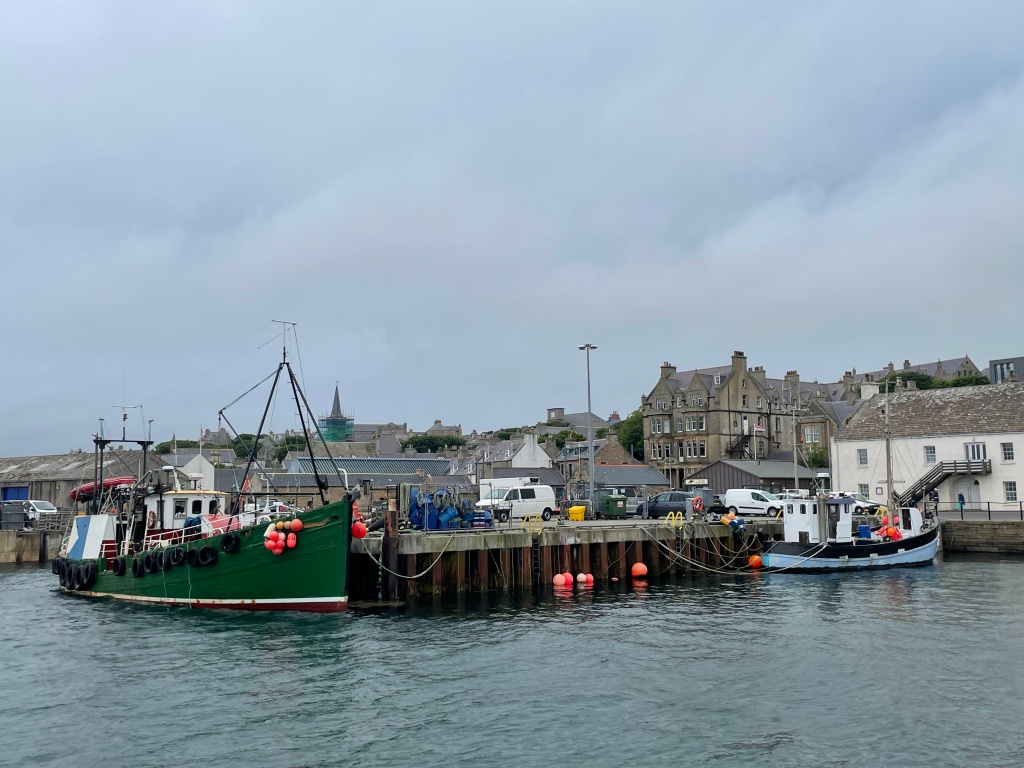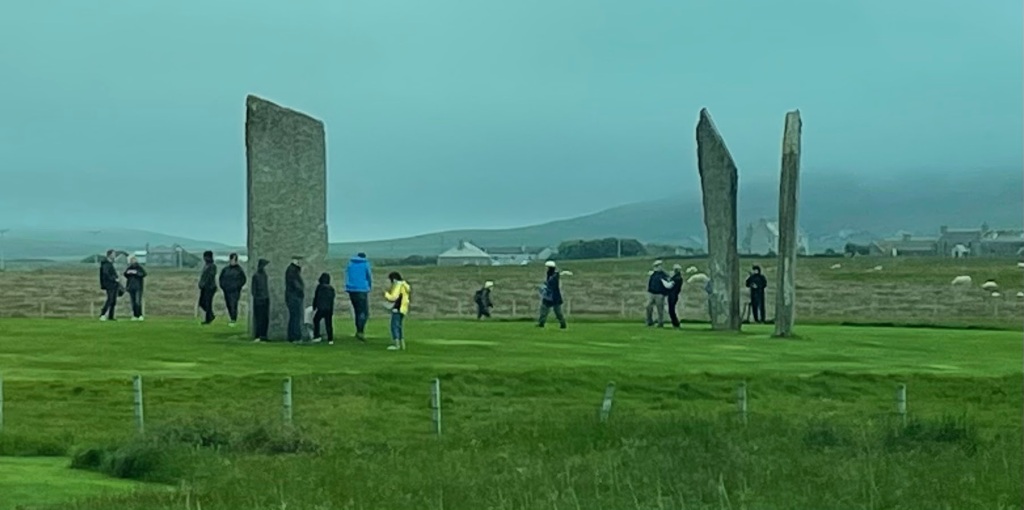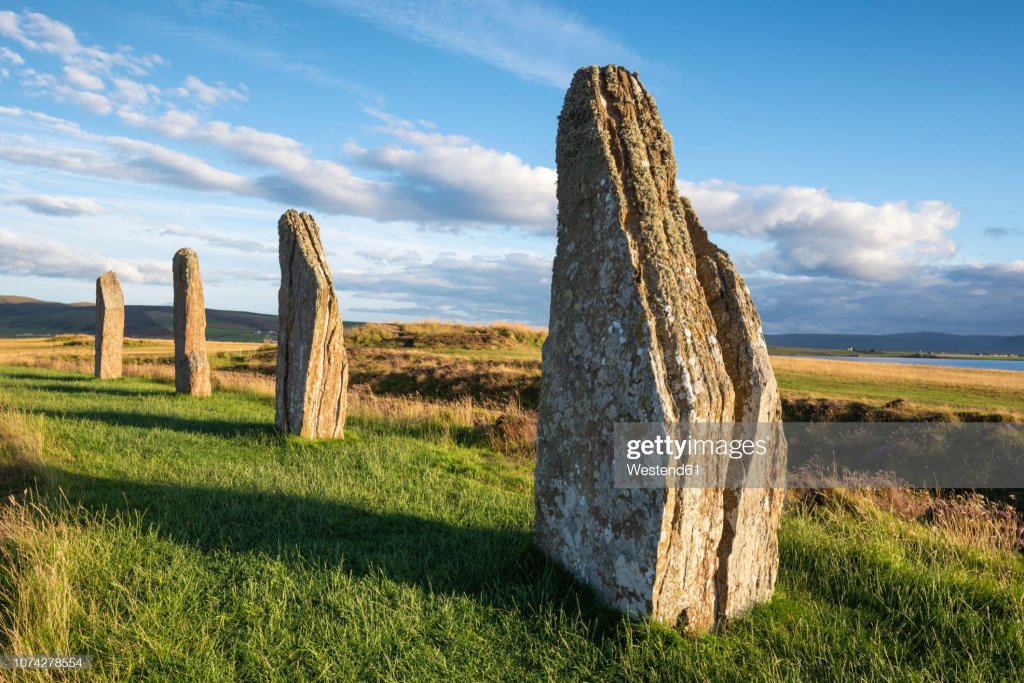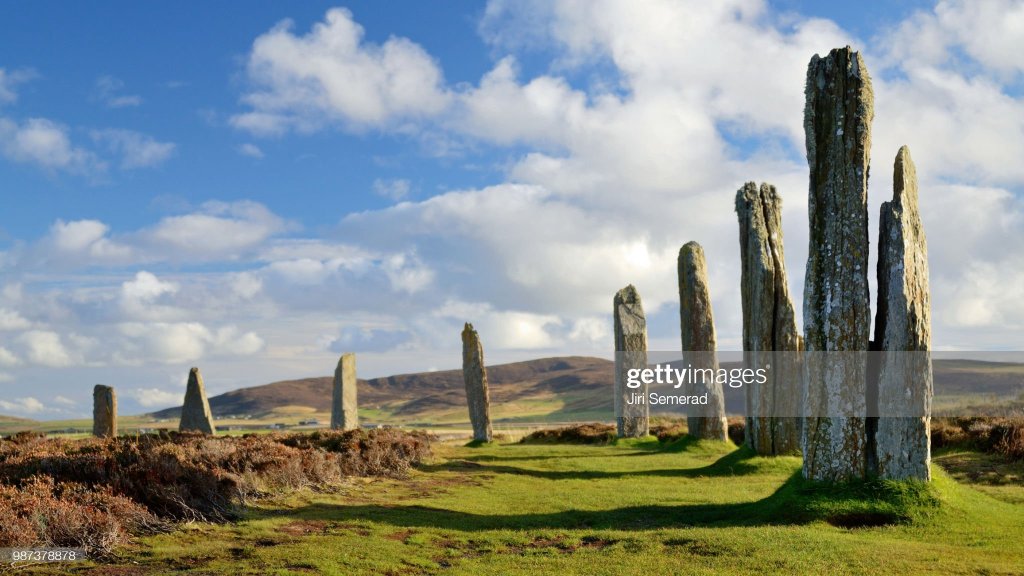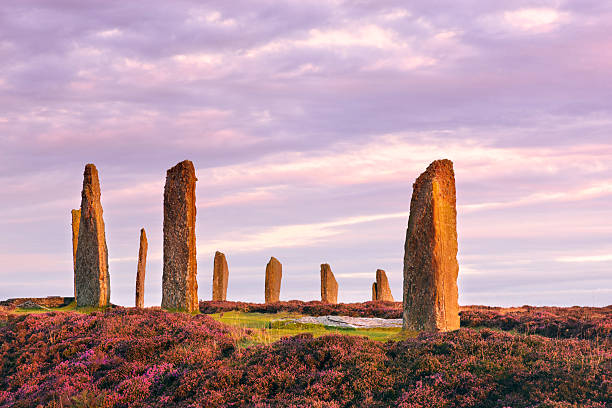June 29, 2022
As we pulled into Orkney, Scotland this morning we were greeted by its trademark wind, gray skies, and rain. Undaunted, Pam headed out to our scheduled tour of the mainland while Ken hunkered under the covers trying to sleep away a nasty head cold. Making our way by bus from the port to the west side of Mainland (the name of the island we were on, because “Why waste a name on this little piece of rock?” our guide said), we pass rolling green hills dotted with cottages, dairy cows, and sheep and here and there a windmill or two.
At first glance one might think there’s really not much to recommend Orkney. It is an archipelago made up of 70 islands – of which only 20 are inhabited – located about 10 miles off the north coast of Scotland. It’s actually closer to the Arctic than it is to London, has fewer than 22,000 residents and its largest inhabited island, Mainland, measures only 14-17 miles in any given direction. But check this out: 15% of the world’s seal population can be found in Orkney, it boasts the shortest available flight anywhere in the world (a 2-minute, 1.7 mile jaunt from Wastray to Papa Westray), it offers some of the best diving conditions and sunken ships for treasure hunting it contains some of the oldest stone structures in the world, and thanks to the European Marine Energy Center may soon be known worldwide for its contribution to the development of clean, renewable energy.
Orkney is situated where the North Sea and Atlantic Ocean meet. They are uniquely positioned to harness wind, wave, and tidal resources to create clean energy. They are able to generate much more clean energy than their island community needs and are in the process of turning that excess energy into hydrogen. Next year they will launch the first hydrogen-fueled ferry boat. Expect to hear more about that as time goes on, and remember: You heard it here first, folks!
Small island life can create tight-knit communities, and Mainland, Orkney seems to reflect that. Every Christmas, while we Americans are carving hams and turkeys and preparing to cheer our favorite football team to victory, the good people of Orkney are gathering at the local church, dividing themselves into two teams and playing their own version of football. Each team has about 200 men, there are no rules and no referees. One team’s goal is to get the ball across a line about halfway up the hill. The other side is trying to get it across a line that’s about halfway out in the harbor. If you’re not playing, you’re cheering the players on, and when it’s all over the winning team chooses an MVP. The MVP’s reward is hosting the entire town for a victory party – and no one goes home to change before the celebration begins.
Today’s excursion was all about Orkney’s ties to the Neolithic period. For those of us who didn’t study archeology, the Neolithic period is the last of three periods of the Stone Age. It is thought to have lasted about 1600 years, from roughly 4100 – 2500. It marked the first time in
Human history that man ceased being nomadic and began staying in one place for long periods of time. The first stone tools were introduced, crafts began appearing and we began domesticating animals. Probably the most famous monument from this period is Stonehenge. Orkney has several Stonehenge-like standing rock structures around the islands. We visited two: the Stones of Stenness Circle and the Ring of Brodgar. There’s not much known about them, so there’s not much I can tell you. They’re a bunch of tall stones standing in a circle and dating back further than Stonehenge. That seemed to be the most important thing for us to know. The people from Orkney are very proud to have Neolithic relics older than that famous Stonehenge place. No one knows why the stones were built in a circle or what purpose they served. The most popular assumption seems to be that they were built for some kind of religious purpose.
The Stones of Stenness are thought to be the earliest henge monument in the British isles. Carbon dating puts them at about 5,400 years old. The Ring of Brodgar is slightly younger at a out 4,900 years old. Pretty incredible that something built circa 3000 BC is still standing. It wasn’t a great day for picture taking here, so I’ve scoured the Internet for pictures that will give you a better view. Think about all the weather these stones have survived, all the wind and rain, storms, tsunamis, earthquakes, whatever….and still they stand. Impressive.
